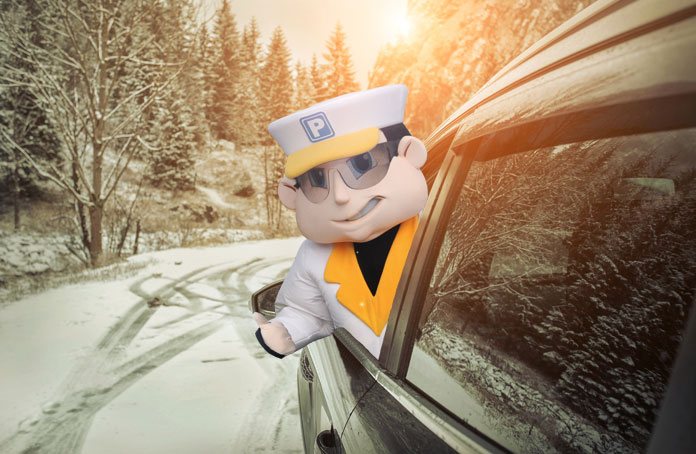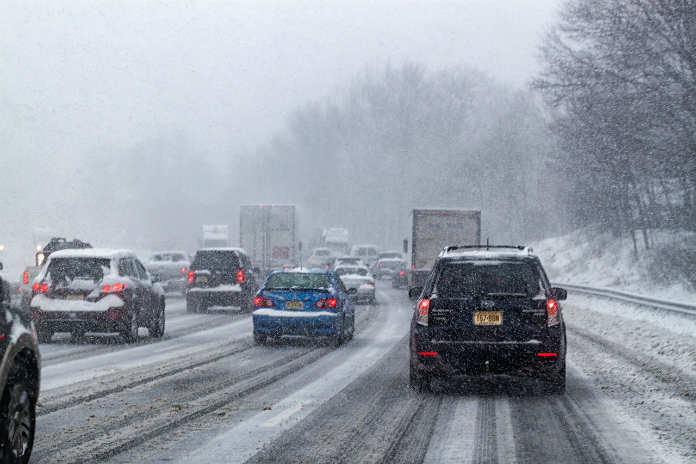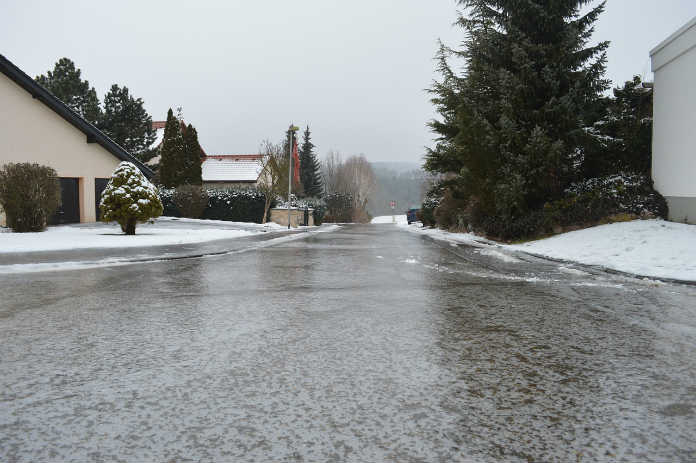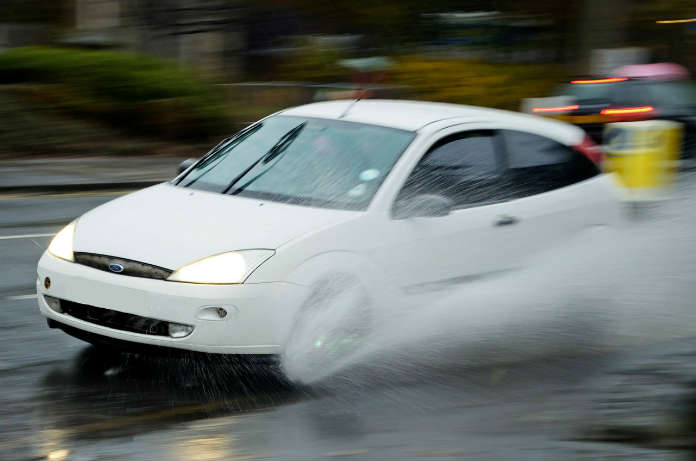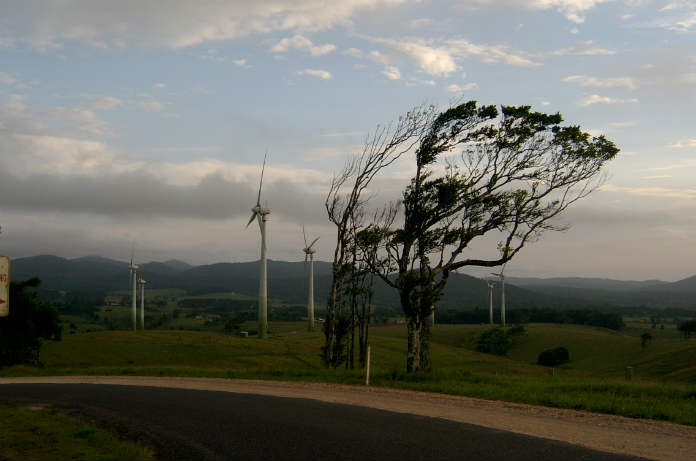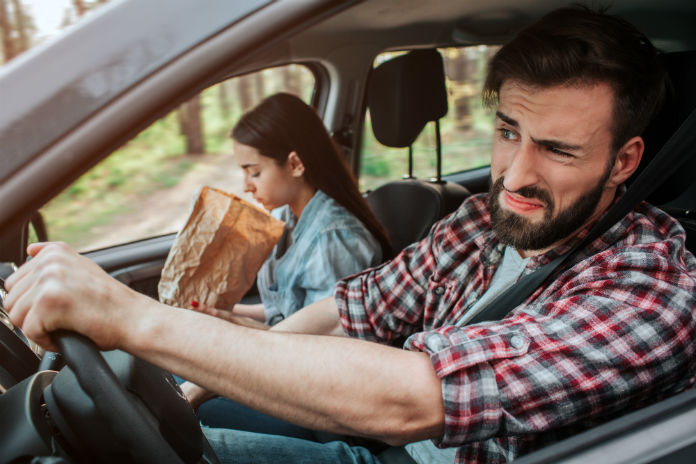Storm season is upon us in the UK and this can make driving to your destination quite literally, a slippery slope. From heavy rain, to blustering winds, anything can happen when you are trying to navigate where you are going in these conditions.
Whether you’re driving across the country or just to the nearest airport, bear the following 25 tips in mind.
Before You Set Off
It’s important to keep safe when you’re on the road during winter, but you know what they say…fail to prepare, prepare to fail.
We’ve got a few tips for you before you even set off.
1) Head to the Petrol Station at the End of Your Trip
Before you arrive home from any journey, check you’ve got at least half a tank of petrol so there’s no risk of your car’s fuel line freezing up overnight. And while you’re there make sure your tyres are inflated according to the manufacturer’s specs; you don’t want to start aquaplaning on high speed roads (more on that later).
2) Defrost the Windows…Properly
In our experience, there are two common techniques for defrosting and demisting your windows: letting your engine run for 10 minutes while you potter around back in the house, or driving without being able to see properly. Both of these are bad ideas!
Driving without full visibility (that’s the entire windscreen being cleared, not just your side) is both illegal and dangerous for you and other road users.
However, leaving the car running while you head back inside can be just as bad, since it’s practically an open invitation for car thieves and it’s bad for the environment.
If you want to defrost your windows properly, use de-icer (or alternatively room temperature salty water) over the entire windscreen and then scrape with an ice scraper — your credit card’s not as efficient and could scratch the window!
Whatever you do, NEVER EVER use boiling water on your windscreen — this will weaken the windscreen and could even crack it.
3) Equipment for the Boot
When we spoke to Aviva about things you should always carry in the boot of your car, they had a great checklist of items should you ever get in a jam:
- tow rope
- de-icing equipment
- spare bulbs
- first aid equipment
- shovel
- working torch
- hazard warning triangle
- car blanket
- spare wheel
- a fully charged mobile
- high visibility jacket
- jump leads
- wellington boots or similar
Tips for Driving in Snow
4) Set Off Slowly
In snow, when roads can be at their hardest to navigate, it’s useful to accelerate more gently than usual, keeping your revs low and changing up to a higher gear as soon as you can to increase your grip on the road. If you can, start in second as this will make your set-off as smooth as possible.
5) Drive into a Skid
It’s the counterintuitive tip you always hear, but that’s because it’s true!
If you start to skid, simply remain calm and steer gently into it without braking. This will right the car once again and you can continue on your way.
6) Watch What’s Going on in Front of You
Just like your mum used to say: “It’s not you I’m worried about, it’s other people.”
You can be as careful as possible, but if the person in front loses control, you could end up in a nasty situation as well. Leave plenty of room between you and the car in front and you (and your mum) won’t have to worry.
7) Tackling Hills
Snowcapped mountains might look amazing, but driving up and down snowy hills is a pain!
On the approach, give yourself even more room in front than usual so you can maintain your speed and not have to switch down gears. Likewise, when you’re heading back down the other side, continue leaving plenty of room and stay in as low a gear as possible.
8) Driving an Automatic in the Snow
If you’re an automatic driver, it can be a good idea to switch to manual mode according to Aviva: “In slippery, snowy conditions you can make driving much safer by changing your setting from ‘automatic’ to ‘manual’ and selecting second gear, which limits the gear changes and also makes you less reliant on the brakes. Many modern automatic cars have a ‘Winter’ mode which reduces the risk of wheel spin. Check the handbook if you’re not sure.”
How to Drive in Icy Conditions
9) Carefully Does It
Driving when it’s icy demands even more care and attention. You should still heed all the tips for driving in snow, like keeping stopping distances large and staying in low gear when navigating hills, but maintain low speeds and be extra cautious of possible hazards.
10) Higher Gear = Better Grip
Although we recommend staying in a low gear for going up and down hills, a higher gear is always wise when driving across ice as the lower torque can help prevent your wheels from spinning out.
11) Cruise Control’s a Big No-No
This should go without saying, but you should keep in control of your car at all times. We know it can get boring when driving down the motorway, but when conditions aren’t ideal keep away from cruise control.
12) Keep Rollin’, Rollin’, Rollin’
Breaking can be your enemy on a slippery road, both when it comes to stopping and when you’re setting off again. If you can, try to slow down well in advance of when you need to and keep rolling until you can speed up again, keeping actual stops to a minimum.
13) Be Wary of Black Ice
Black ice, the most heavy metal-sounding road hazard, is smooth, transparent ice that forms on the surface of the road. Because it’s so clear, it can be nigh-on impossible to see when you’re driving, meaning you might not be aware you’re driving on top of ice until it’s too late.
As a general rule, if it’s cold and the road appears to have a glistening surface, proceed with extreme caution, but be aware that you may not see black ice at all, so just drive carefully whenever the temperature is lower than usual.
How to Drive in Heavy Rain
14) Slooooooooow Down
We’re going to sound like a broken record by the end of this article, but it might just be the most important tip of all when it comes to driving in stormy weather.
As with any weather conditions that reduce visibility and affect road surfaces, maintain a low speed, leave lots of space between you and other vehicles, and keep your eyes peeled for hazards.
15) Keep the Lights On
If you’re driving through torrential rain, make sure your headlights are on. This will help you to see the road and other drivers better in most cases, but even if not it can help others spot you and avoid any potential collisions.
16) Have a Cloth Handy
A microfibre cloth can be indispensable, says Safe Driving for Life: “Get yourself a really good micro-fibre cloth and use it to wipe the windows on the inside. Try not to use your hands or the sleeve of your coat – it’s not effective and can end up adding dirt and grime to the glass, rather than taking it away.”
17) Avoid Aquaplaning
Aquaplaning is when you drive through a puddle so deep that there’s a layer of water between your tyres and the road surface, leading to a loss of control.
Hopefully you can avoid this scary experience, but if you do find yourself aquaplaning gently ease off the accelerator and hold the steering wheel straight until you come back into contact with the road.
Tips for Driving in Fog
18) Visibility is Key
The nature of fog is that it reduces your ability to see what’s going on around you, so the key is making sure there are no other issues to hamper your visibility.
Use your windscreen wipers, turn on the air con to stop your windows from misting up and avoid using your full beams as thick fog will just reflect them straight back at you anyway.
19) Use Your Fog Lights
If visibility is below 100 metres, you’re legally allowed to switch on your fog lights, which will help others to see where you are on the road. Oh, and make sure you actually know how to switch them on when you get a new car!
20) You Guessed It…Drive Slowly
Maintain a low, careful speed and keep your distance from the car in front.
21) Put Your Journey on Pause
If the fog gets really bad, it can be a good idea to pull over when it’s safe to do so, turn your engine off, and wait until the fog has passed. With any luck you’ll get to check Facebook for a few minutes and then you’ll be ready to go again.
Driving in Strong Winds
22) Plan, Plan, Plan
Before you set off, it can be prudent to plan a route that’s more sheltered and therefore less exposed to the elements. So if you live near the coast, steer clear of the beach!
23) Keep a Good Grip on the Wheel
Take a firm hold of the steering wheel, without gripping like you’re holding for dear life, just in case a sudden gust takes you by surprise.
Instead, keep a strong, even grasp of the wheel and make only small adjustments to your turning.
24) Think Twice Before Overtaking
In high winds, overtaking can be particularly hazardous, so it’s sometimes wise to avoid it. This is especially true when overtaking a lorry or other tall vehicle, as when you finally pass the sudden wind can easily take you by surprise.
25) Give Everyone More Room
This doesn’t just apply to the car in front! Remember to give cyclists and buses more room than you usually would, as these road users are likely to get blown around by strong winds!


